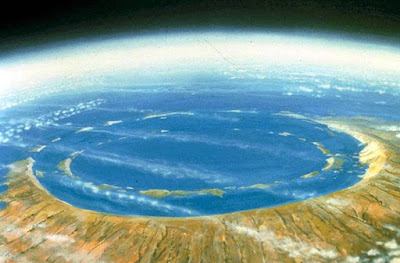A new look at conditions after a Manhattan-sized asteroid slammed into a region of Mexico in the dinosaur days indicates the event could have triggered a global firestorm that would have burned every twig, bush and tree on Earth and led to the extinction of 80 percent of all Earth’s species, says a new University of Colorado Boulder study.
Led by Douglas Robertson of the Cooperative Institute for Research in Environmental Sciences, or CIRES, the team used models that show the collision would have vaporized huge amounts of rock that were then blown high above Earth’s atmosphere. The re-entering ejected material would have heated the upper atmosphere enough to glow red for several hours at roughly 2,700 degrees Fahrenheit (1,500 degrees Celsius) killing every living thing not sheltered underground or underwater.
Led by Douglas Robertson of the Cooperative Institute for Research in Environmental Sciences, or CIRES, the team used models that show the collision would have vaporized huge amounts of rock that were then blown high above Earth’s atmosphere. The re-entering ejected material would have heated the upper atmosphere enough to glow red for several hours at roughly 2,700 degrees Fahrenheit (1,500 degrees Celsius) killing every living thing not sheltered underground or underwater.













